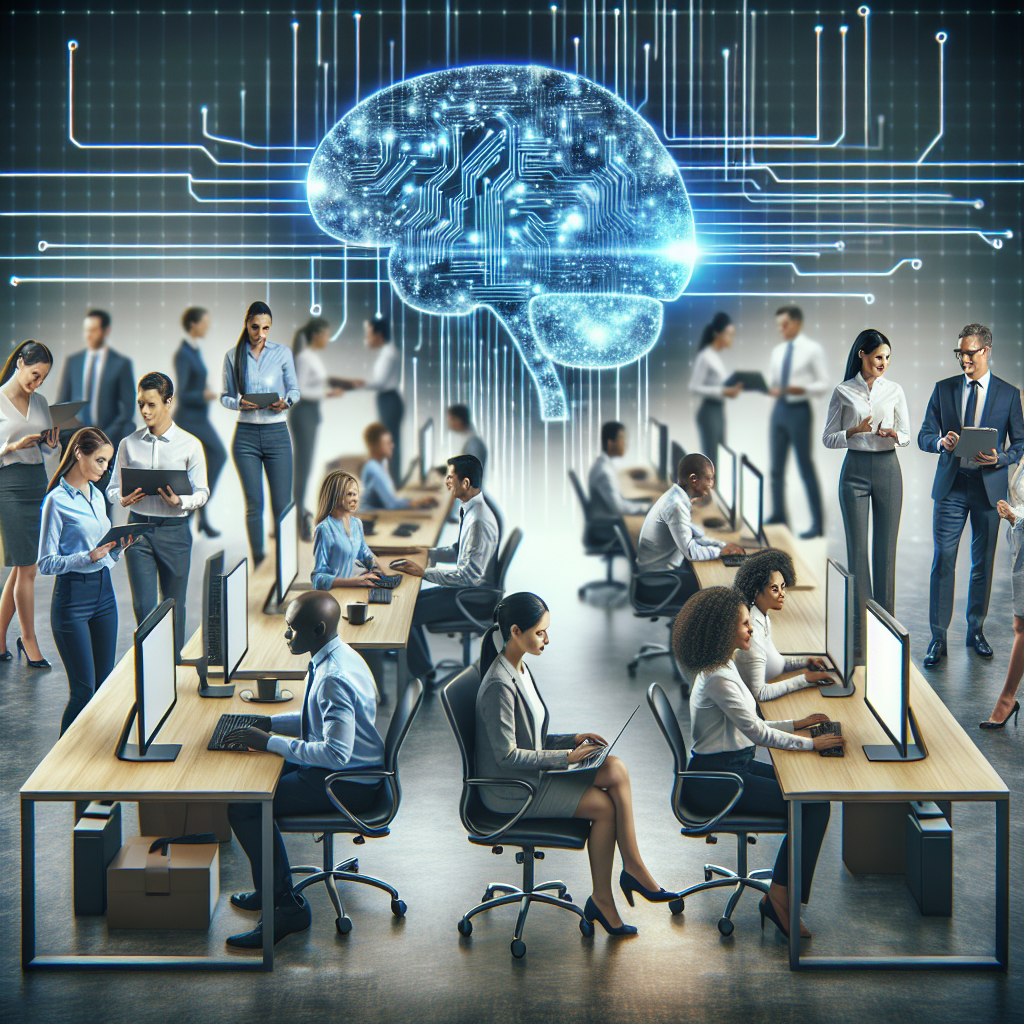AI Integration Can Improve Employee Productivity
Artificial Intelligence (AI) is transforming the way businesses operate, from streamlining processes to improving customer service. One area where AI has the potential to make a significant impact is in improving employee productivity. By integrating AI tools and technologies into the workplace, companies can empower their employees to work more efficiently and effectively. In this article, we will explore how AI integration can enhance employee productivity and provide some examples of AI tools that can help achieve this goal.
Benefits of AI Integration for Employee Productivity
1. Automation of Routine Tasks
One of the key benefits of AI integration is the automation of routine tasks. AI-powered tools can handle repetitive and time-consuming tasks, allowing employees to focus on more strategic and value-added activities. For example, AI chatbots can assist employees with answering frequently asked questions, scheduling meetings, and managing their calendars, freeing up their time to concentrate on more important tasks.
2. Enhanced Decision-Making
AI can also help employees make better decisions by providing them with real-time data and insights. For instance, AI-powered analytics tools can analyze large data sets to identify trends and patterns that humans may overlook. This can help employees make more informed decisions, leading to better outcomes for the business.
3. Personalized Learning and Development
AI integration can also enhance employee learning and development. AI-powered platforms can deliver personalized training materials and resources based on each employee’s learning style and preferences. This can help employees acquire new skills and knowledge more efficiently, leading to improved performance and productivity.
4. Improved Communication and Collaboration
AI tools can facilitate communication and collaboration among employees, regardless of their location. For example, AI-powered virtual assistants can help employees coordinate meetings, share documents, and communicate with team members in real-time. This can improve teamwork and productivity, especially for remote or distributed teams.
Examples of AI Tools for Improving Employee Productivity
1. Virtual Assistants
Virtual assistants, such as Amazon’s Alexa or Google Assistant, can help employees with a variety of tasks, such as scheduling meetings, setting reminders, and answering questions. These AI-powered tools can streamline workflow and improve efficiency by handling routine tasks on behalf of employees.
2. Chatbots
Chatbots can assist employees with answering questions, providing information, and resolving issues in real-time. By automating customer support and internal inquiries, chatbots can help employees save time and focus on more critical tasks.
3. Predictive Analytics
Predictive analytics tools can analyze historical data to forecast future trends and outcomes. By providing employees with insights into market trends, customer behavior, and operational performance, predictive analytics can help them make better decisions and drive business growth.
4. Learning Management Systems
Learning management systems powered by AI can deliver personalized training materials and assessments to employees based on their individual learning needs. By tailoring learning experiences to each employee, these platforms can enhance knowledge retention and skill development.
5. Collaboration Tools
AI-powered collaboration tools, such as Slack or Microsoft Teams, can improve communication and teamwork among employees. These platforms enable real-time messaging, file sharing, and project management, making it easier for employees to collaborate on tasks and projects.
FAQs
Q: How can AI integration improve employee productivity?
A: AI integration can improve employee productivity by automating routine tasks, providing real-time data and insights for decision-making, delivering personalized learning and development opportunities, and enhancing communication and collaboration among employees.
Q: What are some examples of AI tools for improving employee productivity?
A: Some examples of AI tools for improving employee productivity include virtual assistants, chatbots, predictive analytics, learning management systems, and collaboration tools.
Q: How can companies ensure that AI integration benefits employees?
A: Companies can ensure that AI integration benefits employees by involving them in the implementation process, providing training and support for using AI tools, and monitoring the impact of AI on employee productivity and well-being.
Q: What are some potential challenges of AI integration in the workplace?
A: Some potential challenges of AI integration in the workplace include concerns about job displacement, data privacy and security issues, and the need for ongoing training and upskilling of employees to adapt to new technologies.
In conclusion, AI integration has the potential to improve employee productivity by automating routine tasks, enhancing decision-making, providing personalized learning opportunities, and improving communication and collaboration. By leveraging AI tools and technologies, companies can empower their employees to work more efficiently and effectively, leading to better business outcomes and employee satisfaction.

